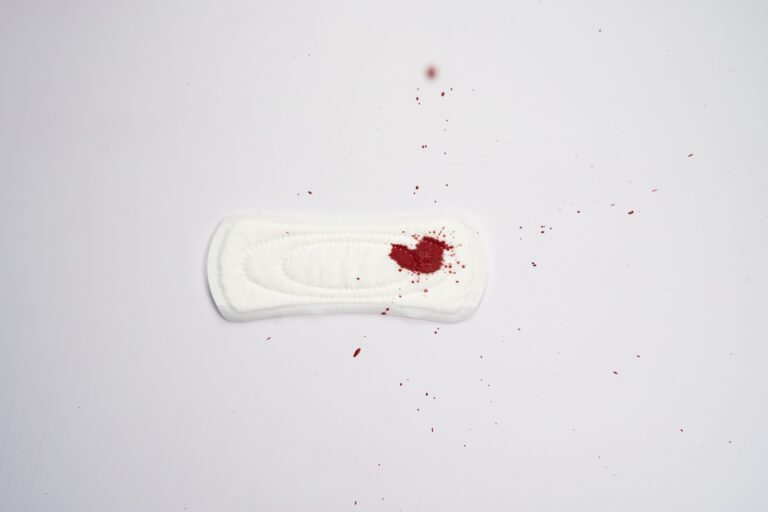Bleeding during ovulation can be startling for a first-timer. However, this breakthrough bleeding before the menstrual cycle is a normal incident to some women, and should not be confused with implantation bleeding.
Ovulation bleeding
Also known as ovulation spotting/intermenstrual bleeding/ or spotting during ovulation. There are several factors that can cause it during ovulation.
The first is changes in hormones. Elevated levels of estradiol in the body can trigger ovulation bleeding. This blood may be pinkish or brownish instead of the normal red color of the menstrual flow. Also, the blood is usually too little to fill a panty liner, hence the name spot.
However, if you notice a heavier flow, it may be due to changes in your contraceptive intake, for instance, if you switch to a new contraceptive. If the ovulation spotting is a little more than just some bloodstains, then you might consider going visiting a medical practitioner.
Bleeding during ovulation can be caused by the rupturing of an egg in the body. During ovulation, an egg is released from the ovaries and moves through the fallopian tubes. Blood can occur due to the rupturing of the egg. Spotting may also occur due to the presence of uterine fibroids. Fibroids are non-cancerous. However, they can trigger ovulation spotting.
Other factors that can cause intermenstrual bleeding include abnormal factors such as having a Pelvic Inflammatory Disease (PUD), some cancers, or STD. There are instances where sexual intercourse can trigger ovulation spotting.
Other factors that can lead to spot include:
- Intense exercise
- Sexual intercourse
- A gynecological exam that may have scratched the lining
Spotting is normal. In most instances, it occurs due to the changes in hormone levels. Ovulation spotting tends to be mild, short (can last up to 2 days), and involves a little dark brown or pinkish blood. Ovulation spotting can be useful for women with a normal cycle. If you regularly get ovulation spotting, then you can use it to identify your fertile days.
If you experience one that that is heavier than the menstrual flow, then you need to consult with your medical practitioner. Heavy bleeding may be triggered by endometriosis, vaginal injury, or cervical polyps.
Spotting during ovulation does not mean pregnancy. Rather, it is a signal that you are on your fertile days and this may be a great time to try and get a baby. Spotting after ovulation may be implantation bleeding, which is an indicator that you may be pregnant.
Implantation bleeding.
Implantation bleeding occurs during the first weeks of pregnancy and is an indicator that you are pregnant. It is common for women to experience it during the first 12 weeks of pregnancy. It is believed to occur due to the implantation of the embryo in the endometrium.
This type of bleeding can occur 9 days after the implantation of the fertilized egg, or 6-12 days after ovulation. Aside from this, there are other signs to look out for. They include mild cramping, headaches, breast tenderness, and nausea. It may also occur a few days prior to the next period.
There are several differences between period and pregnancy bleeding. The first difference is the frequency. Pregnancy spotting typically occurs for about one to two days. On the other hand, the menstrual flow can run up to 5 to 7 days.
Also, implantation one tends to be brown or pinkish in color. You can tell the difference between pregnancy bleeding and period by checking the flow. Pregnancy spotting does not contain blood clots and tends to be lighter throughout its duration. On the other hand, periods may start light at first and get heavier with time. Both periods and implantation bleeding lead to cramping. However, the cramping from implantation is milder.
It is important to note that implantation bleeding can extend to more than two days, even going up to 7 days. Every woman is different. Some may experience light spotting whereas others may experience heavy breakthrough bleeding pregnancy that lasts for a longer time. It is not expected to be heavy. Heavy or profuse bleeding could be an indication of a miscarriage.
Implantation may be confused with ovulation bleeding. If you were planning to get pregnant, and you notice some spotting, then this may be due to implantation, or breakthrough pregnancy bleeding.
Is bleeding a sign of pregnancy?
Every woman is different. Therefore, pregnancy symptoms tend to differ. According to the American Pregnancy Association, only 3% of women report implantation bleeding as the first sign of pregnancy. Therefore, if you suspect that you might be pregnant, it is important to look for other pregnancy signs aside from the spotting. You can try the online early detection pregnancy test. There are women who experience spotting and cramping, whereas there are other women who do not even experience it and still turn out pregnant. Some of the classic symptoms of pregnancy include:
- Morning Sickness
- Breast tenderness
- Fatigue
- Implantation bleeding
- Mood swings
- Food aversion
- Changes in basal metabolic temperature
- Constipation
The good news is that 50% of women who experience pregnancy spotting end up with healthy babies. This spotting does not interfere with the development of the baby.
Whether you are bleeding or spotting, it is advisable to contact your health care provider to determine the underlying cause of the issue.
References:
- Menstrual cycle calculator.com
- Babyhopes.com
- Medscape.com
- American Pregnancy Association.com
- Parenting.com

